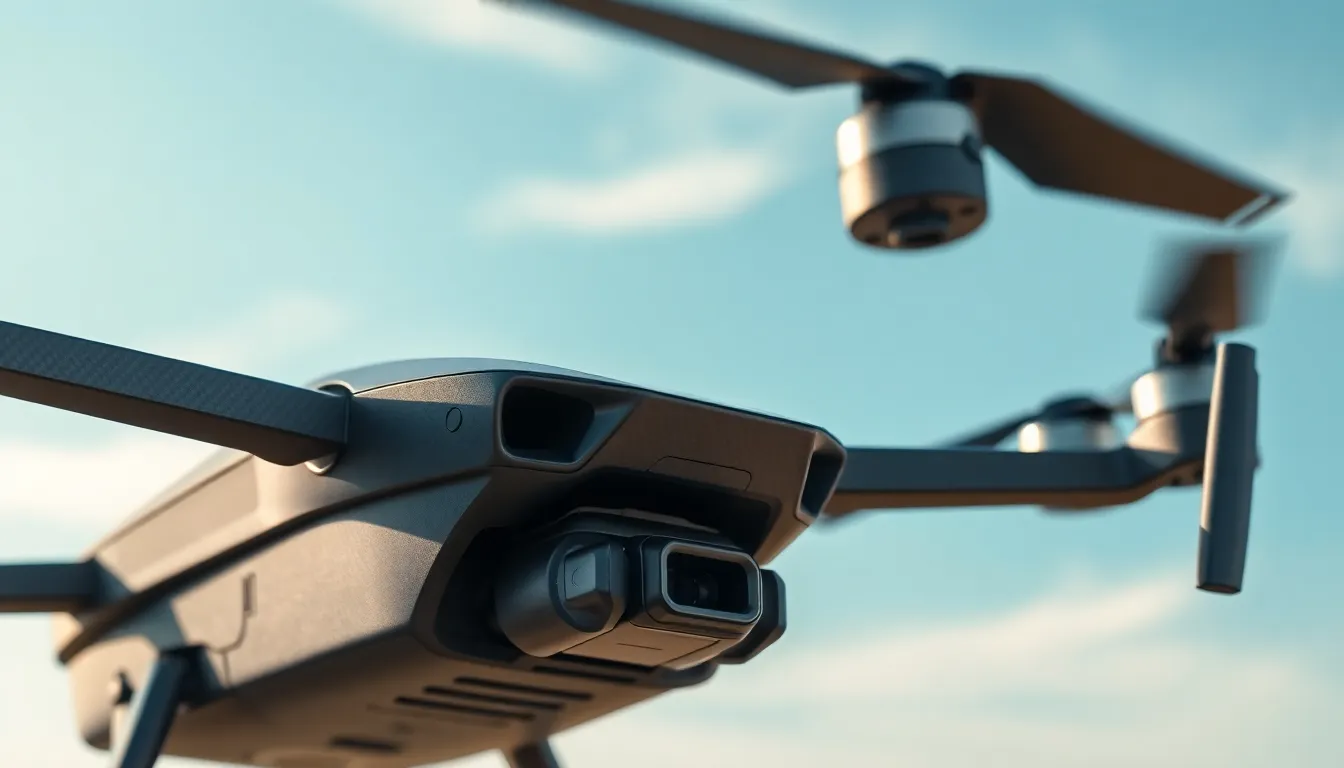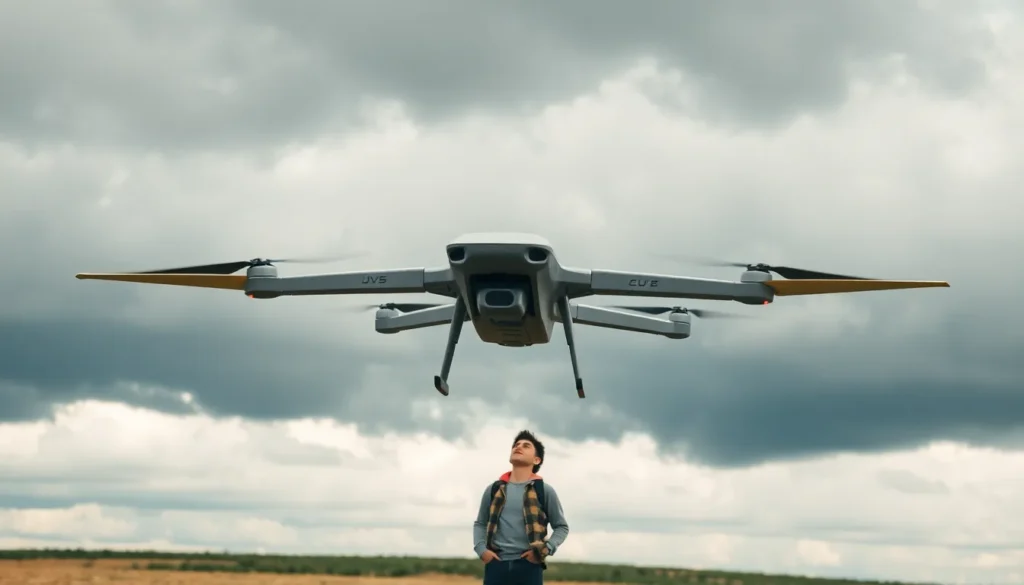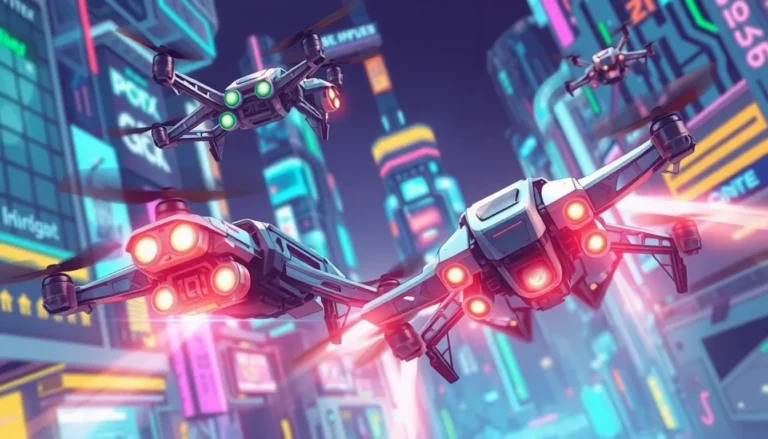Table of Contents
ToggleDrones are the modern-day superheroes of the skies, but even they have their kryptonite: wind resistance. Picture this: a sleek drone soaring through the air, only to be tossed around like a leaf in a hurricane. Not exactly the majestic flight one might envision. Understanding wind resistance is crucial for anyone looking to master drone technology, whether for fun or serious business.
Overview of Wind Resistance in Drones
Wind resistance significantly affects a drone’s flight dynamics. Strong gusts can cause instability, leading to erratic movements. Such turbulence often complicates control and navigation, especially for novice pilots.
Drones utilize aerodynamic designs to minimize wind resistance. Flight performance alters with changes in wind speed and direction. High winds can reduce battery efficiency, impacting overall flight duration. A drone’s ability to counteract wind relies heavily on its size, weight, and built-in stabilization features.
Factors influencing wind resistance include the drone’s shape and rotor design. Smaller drones generally experience more turbulence due to a higher surface area-to-weight ratio. Conversely, larger drones often withstand stronger winds due to greater mass and stability.
Understanding wind resistance aids in selecting the right drone for specific environments. Environments with frequent winds may require models with advanced stabilization systems. Features like GPS hold and altitude control enhance a drone’s capacity to resist wind disturbances.
Evaluating weather conditions before flight is crucial. Forecasts indicating high winds can signal potential risks. Pilots opting for outdoor usage must assess their drone’s wind rating to ensure safe operation.
Awareness of gust patterns and changes enhances situational control. Mastering the implications of wind resistance leads to improved drone handling in various weather conditions.
Factors Affecting Wind Resistance

Understanding the elements that impact wind resistance in drones helps enhance their performance. Several key factors influence how effectively a drone withstands wind.
Drone Design and Aerodynamics
Drone design plays a significant role in its wind resistance. Aerodynamic shapes minimize drag, allowing smoother airflow around the craft. Larger drones often feature expansive wingspans that provide better stability against gusts. Rotor placement also matters; strategic positioning reduces turbulence and improves handling. Lightweight designs typically lead to increased agility, but smaller drones experience more significant wind effects. Each design decision aims to enhance resistance to wind while maintaining flight efficiency.
Materials Used in Drones
The materials used in drone construction impact their wind resistance. Composite materials such as carbon fiber provide strength without adding excessive weight. Lighter materials allow drones to maneuver efficiently, yet they may suffer in high-wind situations. Metals like aluminum offer durability, providing a solid framework that enhances stability. Each material choice affects the drone’s overall center of gravity, influencing how it responds to wind. Balancing these attributes is crucial for optimal wind performance.
Testing Wind Resistance
Testing wind resistance in drones involves both simulation techniques and real-world testing methods to determine how various designs perform under windy conditions.
Simulation Techniques
Simulation techniques effectively model wind conditions and assess drone performance. These methods utilize computational fluid dynamics (CFD) to visualize airflow around a drone’s body. By altering design parameters, engineers analyze how changes affect drag and stability. Simulations allow for testing various scenarios without physical prototypes. Early-stage assessments can identify potential issues related to wind resistance. They provide detailed data on how different speeds and wind directions impact flight characteristics.
Real-World Testing
Real-world testing complements simulations to evaluate a drone’s performance in actual windy environments. Pilots fly drones in varying wind conditions to gather empirical data. This data includes stability, control responsiveness, and battery efficiency during flights. Monitoring instruments record flight performance metrics while navigating specific obstacles or tasks. Controlled environments, like wind tunnels, can also simulate external factors like gusts. Repeated tests across different conditions ensure consistency in performance. This comprehensive approach helps refine designs before market release.
Impact of Wind Resistance on Performance
Wind resistance plays a significant role in a drone’s overall performance. It affects various aspects, including flight stability and battery life.
Flight Stability
Flight stability directly correlates to wind resistance. Strong winds create turbulence, leading to erratic movements. Drones with aerodynamic designs minimize this turbulence and maintain stability effectively. Slight alterations in wind speed or direction can cause instability, especially for smaller drones. Larger drones, equipped with expansive wingspans and powerful rotors, handle windy conditions better. Pilots must account for wind patterns and adjust their flying techniques to enhance control. When navigating gusty environments, advanced stabilization systems can significantly improve flight stability.
Battery Life
Wind resistance impacts battery life notably. Drones operating in high winds consume more energy to maintain stability and counteract force. Increased power usage results in quicker battery depletion. Drones designed with lightweight materials can enhance efficiency in windy conditions. Implementing energy-efficient flight modes also helps prolong battery life. Monitoring wind conditions before flights remains crucial in planning for maximum flight time. Evaluating performance data helps determine the most suitable drone for varying wind scenarios.







